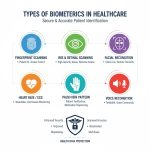Agricultural Biologicals Market: Revolutionizing Sustainable Farming Through Nature-Based Solutions
Overview of Industry
The Agricultural Biologicals Market represents a transformative segment within the global agriculture industry, encompassing products derived from naturally occurring microorganisms, plant extracts, beneficial insects, and other organic matter. These innovative solutions serve as sustainable alternatives to conventional chemical pesticides and fertilizers, addressing the growing demand for environmentally friendly farming practices. The market’s remarkable growth trajectory, valued at USD 16.52 billion in 2024 and projected to reach USD 68.12 billion by 2035 with a robust CAGR of 13.70%, reflects the agricultural sector’s fundamental shift toward biological solutions. Key driving factors include increasing consumer awareness about food safety, stringent regulatory frameworks limiting chemical pesticide usage, rising organic food consumption, and the urgent need for sustainable agricultural practices to combat climate change while maintaining crop productivity and quality.
Get a Sample Copy:- https://www.vantagemarketresearch.com/agricultural-biologicals-market-1049/request-sample
Market Dynamics
The Agricultural Biologicals Market operates within a complex ecosystem influenced by multiple interconnected factors that shape its growth trajectory and development patterns. Consumer preferences have undergone a significant transformation, with increasing demand for residue-free, organic produce driving farmers to adopt biological solutions over traditional chemical inputs. This shift is further accelerated by stringent regulatory policies implemented by governments worldwide, particularly in developed regions, which have imposed restrictions on synthetic pesticides due to environmental and health concerns. The market dynamics are also influenced by technological advancements in biotechnology, enabling the development of more effective and targeted biological products through improved formulation techniques and delivery mechanisms. Economic factors play a crucial role, as the initial higher costs of biological products are increasingly offset by long-term benefits including soil health improvement, reduced input dependency, and premium pricing for organic produce. Additionally, the growing awareness among farmers about integrated pest management practices and sustainable agriculture has created a favorable environment for market expansion, supported by government initiatives promoting biological farming methods through subsidies and educational programs.
Top Trends
Several transformative trends are reshaping the Agricultural Biologicals Market landscape, reflecting the industry’s evolution toward more sophisticated and effective biological solutions. Precision agriculture integration stands out as a leading trend, where biological products are being combined with advanced technologies such as drone applications, GPS-guided systems, and IoT sensors to optimize product efficacy and reduce application costs. The development of consortium-based products, which combine multiple beneficial microorganisms to provide comprehensive plant protection and nutrition, represents another significant trend gaining momentum among manufacturers and farmers alike. Biostimulant adoption has surged dramatically, with these products enhancing plant resilience, nutrient uptake efficiency, and stress tolerance under adverse environmental conditions. The trend toward customized biological solutions tailored to specific crops, soil types, and regional conditions is becoming increasingly prominent, driven by advances in microbial research and understanding of plant-microbe interactions. Furthermore, the integration of artificial intelligence and machine learning in product development and application recommendations is revolutionizing how biological products are formulated, tested, and deployed in agricultural systems, creating more targeted and effective solutions for modern farming challenges.
Top Report Findings
- The biofertilizers segment dominates the market share, accounting for approximately 45% of total revenue due to increasing soil degradation and demand for organic farming practices.
- North America leads the global market with over 35% market share, driven by advanced agricultural technologies and strong regulatory support for biological products.
- Seed treatment applications represent the fastest-growing segment with a projected CAGR of 16.2% through 2035, attributed to early-stage plant protection benefits.
- Microbial-based products constitute nearly 60% of all agricultural biologicals, with bacteria-based solutions showing the highest adoption rates.
- The cereals and grains crop segment accounts for the largest application area, representing 40% of market consumption globally.
- Foliar spray remains the preferred application method, capturing 42% of market share due to ease of application and rapid plant uptake.
- Small and medium-scale farmers represent 55% of end-users, indicating widespread adoption beyond large commercial operations.
- Organic farming expansion contributes to 25% of market growth, with certified organic acreage increasing by 8% annually worldwide.
Challenges
The Agricultural Biologicals Market faces several significant challenges that impede its full potential realization and widespread adoption across global agricultural systems. Product efficacy variability remains a primary concern, as biological products often demonstrate inconsistent performance compared to synthetic alternatives, influenced by environmental factors such as temperature, humidity, pH levels, and soil conditions that can affect microbial viability and activity. Storage and handling complexities present ongoing challenges, as many biological products require specific temperature and humidity conditions to maintain potency, creating logistical difficulties and increasing distribution costs. Farmer education and awareness gaps continue to hinder market growth, as many agricultural producers lack sufficient knowledge about proper application techniques, timing, and integration with existing farming practices. Regulatory approval processes for biological products often involve lengthy and expensive procedures, varying significantly across different countries and regions, creating barriers for manufacturers seeking global market access. Additionally, the higher initial costs of biological products compared to conventional chemicals pose financial constraints for price-sensitive farmers, particularly in developing regions where cost considerations often outweigh long-term sustainability benefits.
Opportunities
The Agricultural Biologicals Market presents numerous compelling opportunities for expansion and innovation, driven by evolving agricultural needs and technological advancements. Emerging markets in Asia-Pacific, Latin America, and Africa offer tremendous growth potential, as these regions experience increasing agricultural modernization, rising income levels, and growing awareness about sustainable farming practices. The development of next-generation biological products through advanced biotechnology, including genetically modified microorganisms and synthetic biology applications, opens new possibilities for enhanced efficacy and targeted solutions. Strategic partnerships between biological product manufacturers and technology companies create opportunities for innovative delivery systems, precision application methods, and data-driven optimization of biological treatments. The expanding organic food market provides substantial opportunities for biological product adoption, as organic certification requirements mandate the use of approved biological inputs. Government initiatives promoting sustainable agriculture through financial incentives, research funding, and regulatory support create favorable conditions for market growth. Furthermore, the integration of biological products with digital agriculture platforms offers opportunities for enhanced product performance monitoring, application optimization, and evidence-based recommendations, potentially addressing current efficacy concerns while improving farmer confidence and adoption rates.
Key Questions Answered in Agricultural Biologicals Market Report
- What are the primary factors driving the rapid growth of the Agricultural Biologicals Market globally?
- How do regulatory frameworks in different regions impact the development and commercialization of biological agricultural products?
- Which biological product categories demonstrate the highest growth potential and market penetration rates?
- What are the main challenges facing farmers in adopting agricultural biologicals over conventional chemical inputs?
- How do environmental factors influence the efficacy and performance of different types of biological products?
- What role does precision agriculture technology play in enhancing the effectiveness of biological product applications?
- Which geographical regions present the most promising opportunities for agricultural biologicals market expansion?
- How are consumer preferences and food safety concerns shaping the demand for biologically-treated agricultural products?
- What are the key technological innovations driving product development in the agricultural biologicals sector?
- How do economic factors and cost considerations influence farmer decision-making regarding biological product adoption?
Regional Analysis
The global Agricultural Biologicals Market exhibits distinct regional characteristics and growth patterns, with North America, Europe, and Asia-Pacific representing the three dominant markets driving worldwide expansion. North America maintains its leadership position, commanding over 35% of global market share, primarily due to advanced agricultural infrastructure, strong research and development capabilities, and supportive regulatory frameworks that encourage biological product adoption. The United States leads regional growth through substantial investments in agricultural biotechnology, extensive university research programs, and favorable government policies promoting sustainable farming practices. Europe represents the second-largest market, characterized by stringent environmental regulations that restrict synthetic pesticide usage and strong consumer demand for organic produce, creating an ideal environment for biological product penetration. Countries like Germany, France, and the Netherlands demonstrate particularly high adoption rates, supported by comprehensive farmer education programs and government subsidies for sustainable agriculture initiatives. Asia-Pacific emerges as the fastest-growing regional market, driven by rapid agricultural modernization, increasing food security concerns, and growing environmental awareness across countries like China, India, and Australia. The region’s vast agricultural land area, diverse cropping systems, and rising income levels create substantial opportunities for biological product manufacturers, despite challenges related to farmer education and distribution infrastructure in rural areas.
Conclusion
The Agricultural Biologicals Market stands at the forefront of agricultural innovation, representing a paradigm shift toward sustainable and environmentally responsible farming practices. With its impressive projected growth from USD 16.52 billion in 2024 to USD 68.12 billion by 2035, this market demonstrates the agricultural industry’s commitment to addressing global food security challenges while preserving environmental integrity. The convergence of technological advancement, regulatory support, and changing consumer preferences creates an unprecedented opportunity for biological solutions to transform modern agriculture.
As the industry continues to evolve, success will depend on addressing current challenges through improved product consistency, enhanced farmer education, and continued innovation in product development and delivery systems. The integration of digital technologies with biological products promises to unlock new levels of precision and effectiveness, while expanding market opportunities in emerging economies offer pathways for global growth.
The future of agriculture increasingly relies on harnessing nature’s own mechanisms to protect crops, enhance soil health, and ensure sustainable food production for a growing global population. The Agricultural Biologicals Market represents not just a commercial opportunity, but a critical component in building resilient and sustainable agricultural systems capable of meeting the challenges of the 21st century.
![[Market Research Reports] – Research Google News Blog | VMR.Biz](https://www.vmr.biz/wp-content/uploads/2022/12/logo-removebg-preview.png)











